






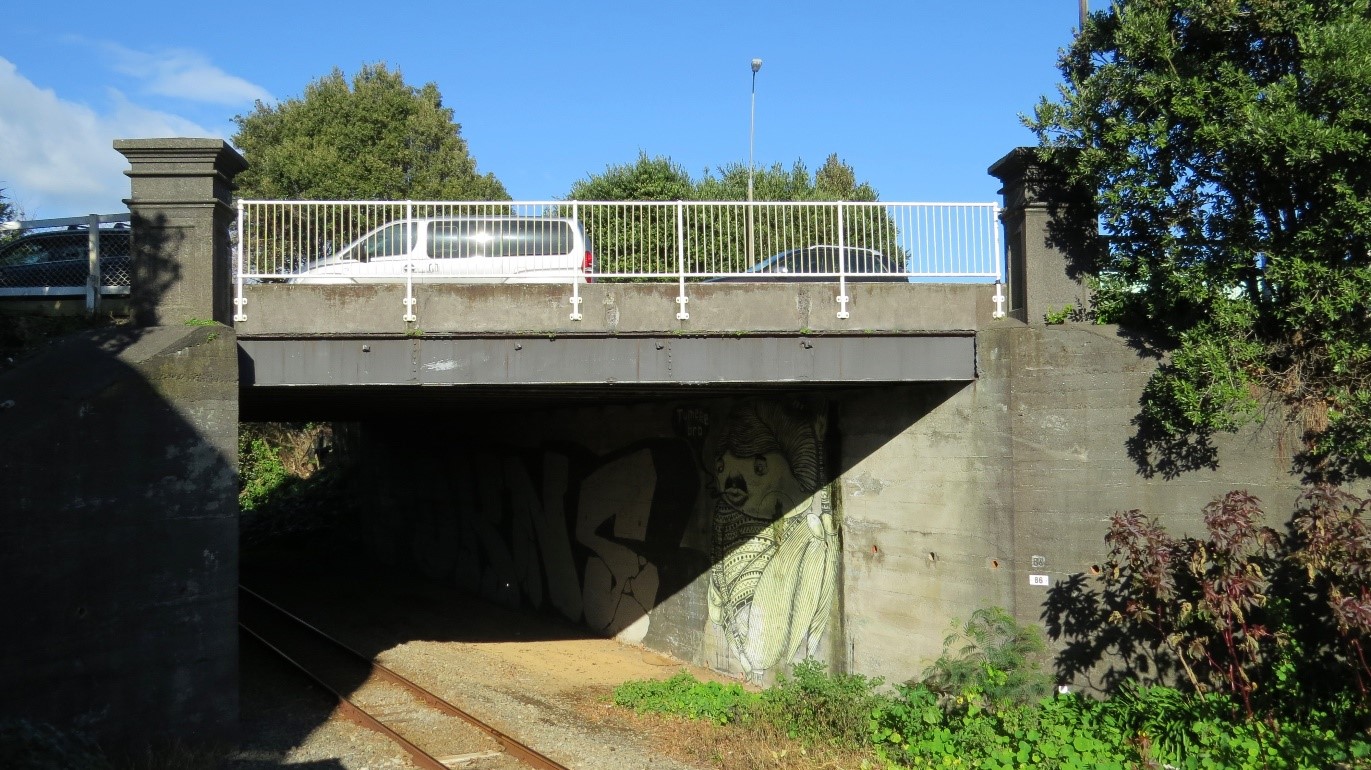



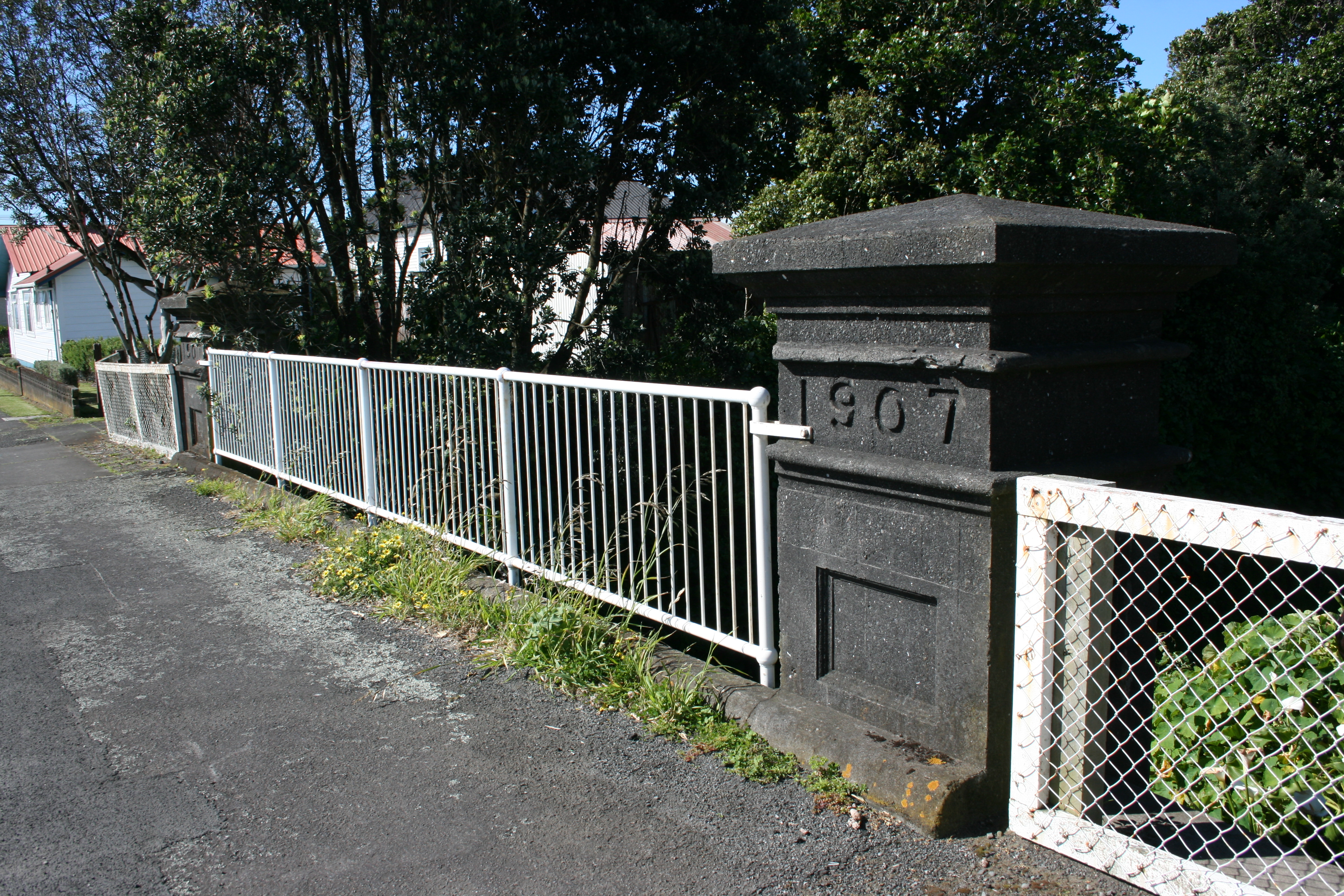
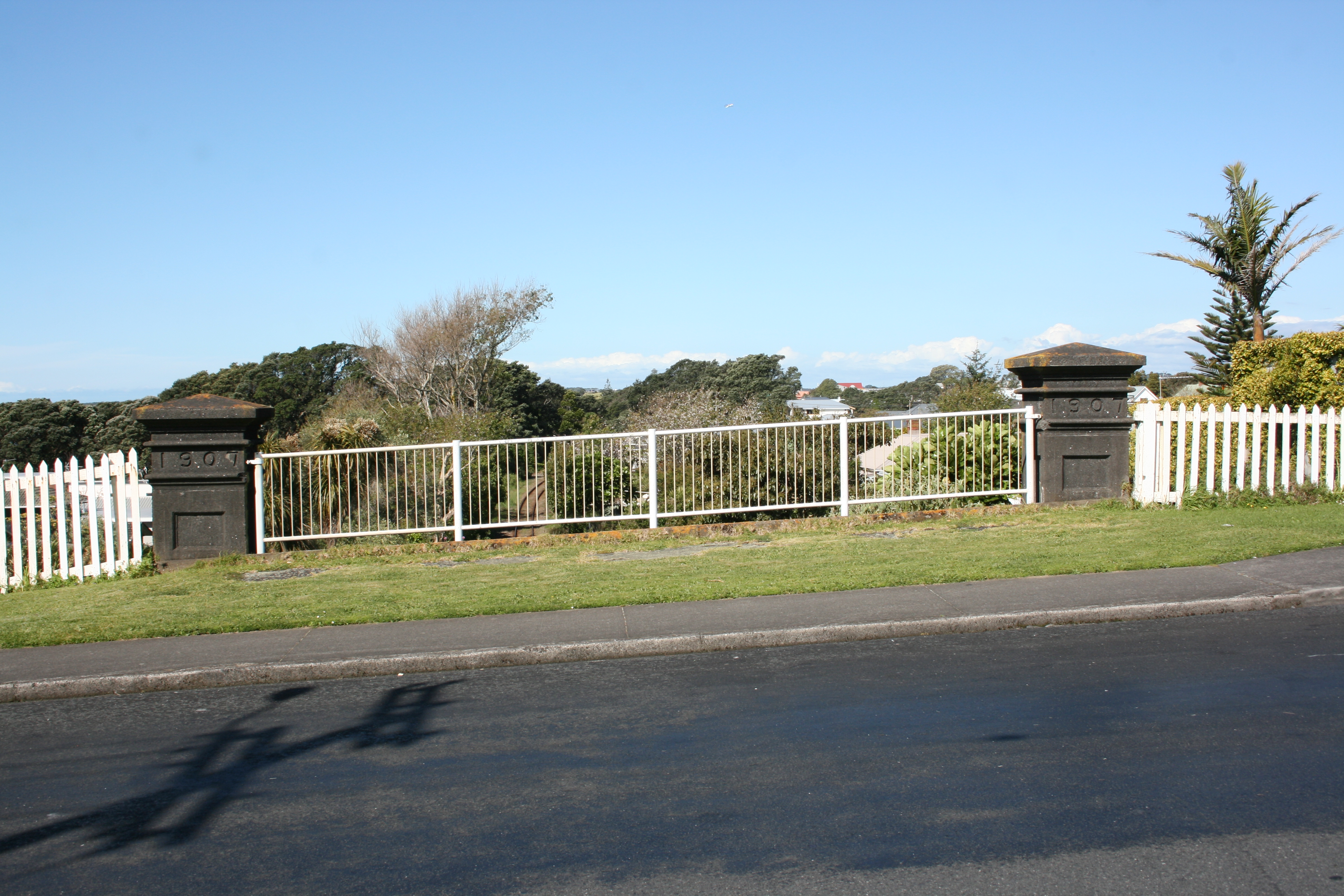
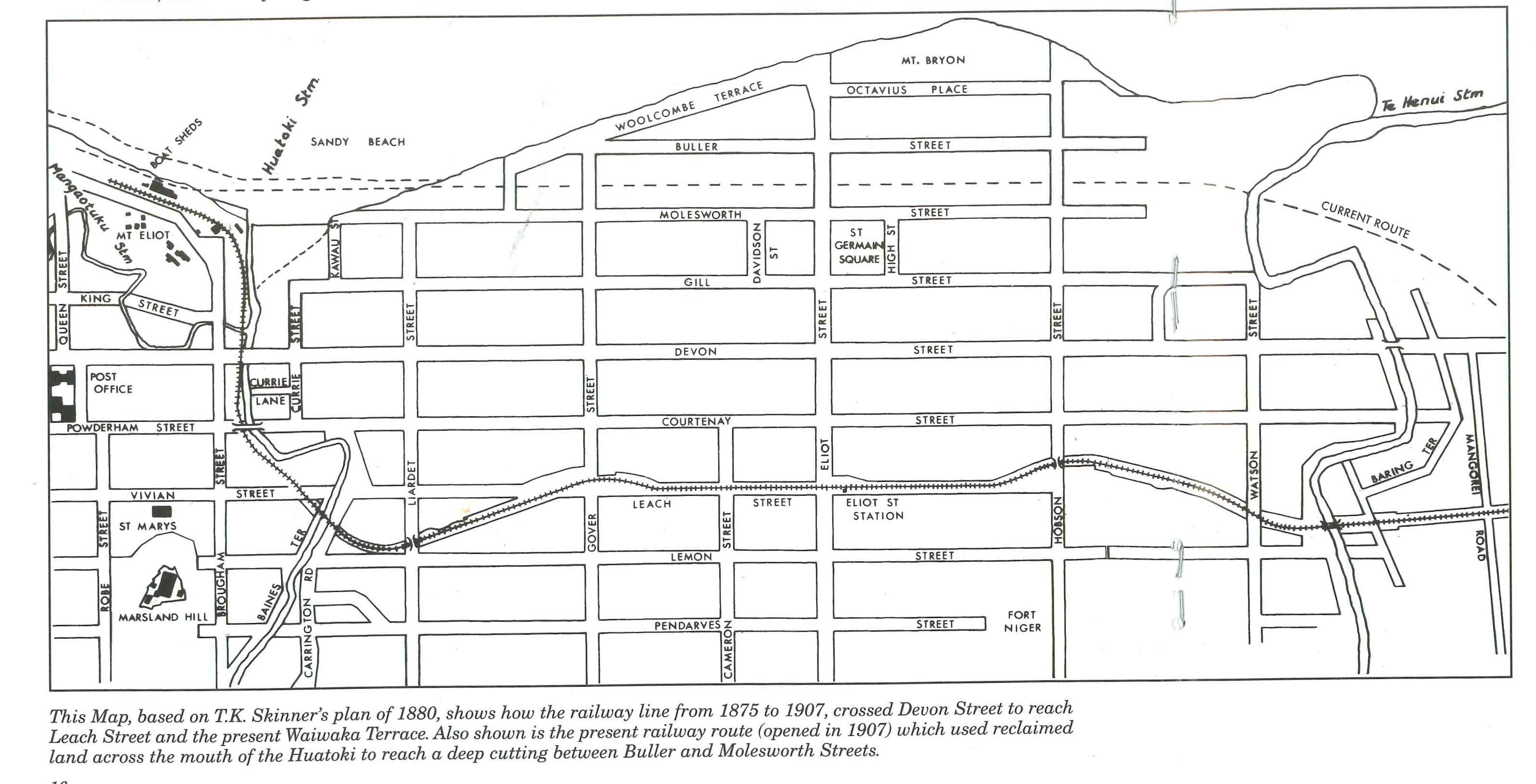
Taranaki’s first railway, between New Plymouth and Waitara, was officially opened to great fanfare on 14 October 1875. However, this original route included both a steep incline and five dangerous level crossings within New Plymouth town limits, including one on Devon Street alongside the Huatoki Stream. Whilst a deviation had been considered for some time, it was the deaths during August-September 1901 of two citizens within a week, Mr Lawson at the Watson Street crossing and Major Charles Brown at the Devon Street crossing, which spurred the town into action.
Within days of the second accident, meetings were held by both the Taranaki Chamber of Commerce and the New Plymouth Borough Council to discuss the urgent need to deviate the railway away from Devon Street. A deputation comprising the mayor and others soon proceeded to Wellington to discuss the issue with the Minister of Railways, Sir Joseph Ward; although the Minister expressed sympathy, he could not provide a definite answer to the question of constructing a deviation.
Progress on the deviation proceeded slowly over the next couple of years, and it wasn’t until October 1904 that the Borough Council met with the District Railway Engineer, Mr McIntosh, to discuss the deviation. Local papers published editorials in support of the deviation and letters to the editor pointed out the merits of the scheme. The route proposed by the Borough Council at this time involved a deviation along the sea cliffs below Woolcombe Terrace, which were rapidly eroding and which could be stabilised by the construction of the railway and accompanying sea wall; the council was prepared to contribute £2000 towards this work.
The Borough Council again met with Sir Joseph Ward whilst he was on an official visit to New Plymouth in January 1905, with the railway deviation being the predominant topic of conversation. Again, Ward was sympathetic to New Plymouth’s predicament, but cited monetary constraints as the principal issue preventing immediate action; although he would seriously consider what could be done to alleviate the situation. The following month, Ward sent an officer from the Railways Department to report specifically on the matter. It was late-May when New Plymouth received the news from Ward that he would take the necessary legislative steps to ensure the railway deviation proceeded. However, whilst Ward had promised to introduce a Bill in the current Parliamentary session, by late-September this still had not occurred, with no provision being made in the Public Works Estimates for this work either.
This absence of action caused some concern and a public meeting was convened where it was decided another deputation would visit the Minister in Wellington. On meeting with Sir Joseph Ward, the New Plymouth deputation was given assurances that Ward would definitely move that the necessary legislative steps be undertaken to enable construction of the deviation. In late-October 1905, the Sentry Hill-New Plymouth Railway Deviation Bill was introduced to Parliament by Sir Joseph Ward, passing its third reading on 28 October; although not without opposition from some ‘backblock’ MP’s who protested that not only did they not have a railway, but also lacked formed roads.
Despite authorisation being given for construction of the railway deviation, the proposed route remained unclear; at least publicly. The general view expressed within local papers, by New Plymouth politicians, and the Borough Council, was that the railway should follow the sea route, with the town still pressing the government for this route until at least as late as early-June 1906. However, the Railways Department had other ideas and were quietly proceeding with its own plan to deviate the railway along the present alignment between Molesworth and Buller Streets. It seems the Railways Department deliberately avoided consultation on the proposed route, ignoring requests from the Borough Council for information on the proposed route until long after the final decision had been made.
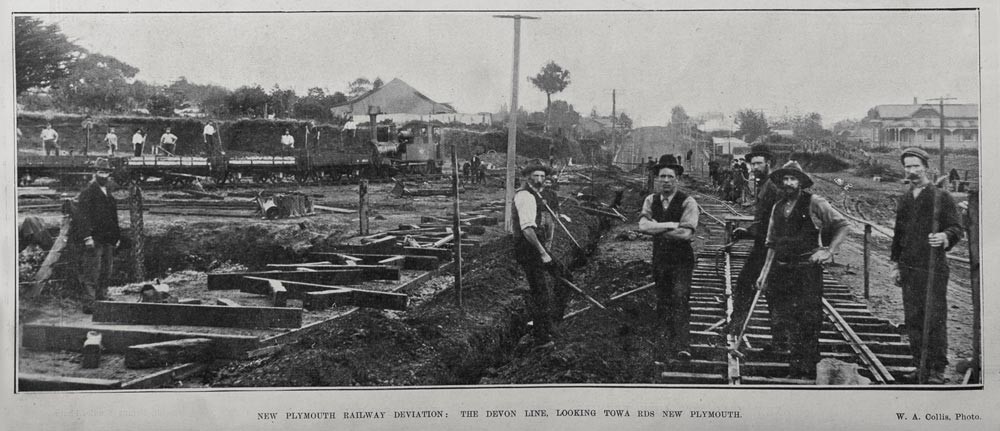
Devon Street East looking west towards New Plymouth from about present site of The Federal Store café. These railway tracks were temporary arrangements to facilitate construction. Auckland Weekly News, 9 August 1906, page 6, Sir George Grey Special Collections, Auckland Libraries, AWNS-19060809-6-5.
That the inland route was to be followed was publicly notified during early-May 1906, with the Railways Department also confirming at this time that all crossings were to be “bridges or subways over or under the railway”. Construction commenced late the following month, however, as with the planning stages, proceeded slowly. Challenges involved in constructing the inland route included draining and filling a large swamp, the purchase of a large amount of land, the removal and demolition of several houses at Eliot and Hobson Streets, and the construction of a number of permanent and temporary bridges over several deep cuttings.
As in other deviation related matters, the Railways Department was not initially forthcoming with information about the types of bridges to be constructed, or whether they would be the full width of the street. Eventually, in early-August 1906, the Borough Council made a number of formal requests to the Railways Department regarding the deviation, including that all bridges within the Borough (Pari, Eliot and Hobson), be the full width of the street. In fair spirit, the Railways Department met most of council’s requests, including that the bridges be the full width of the street.
It is unclear by whom the decision was made to construct the principal bridges along the deviation of reinforced concrete, however, it is associated with growing local and international interest in the use of the material for bridge construction purposes. Interestingly, Taranaki was a leader in the use of reinforced concrete for bridge construction from the early-1900s, with concrete seen as a more durable alternative to wood and steel in a high rainfall region also subjected to salt-laden winds from the Tasman Sea. The Taranaki County Council (who had authority over the Devon Street East Bridge at the time of construction), was the first local authority in New Zealand to enshrine in policy the use of reinforced concrete for all new bridge construction. A considerable number of reinforced concrete bridges from the early decades of the twentieth century survive in Taranaki, with many still in daily use.
It is perhaps somewhat fortunate that it was decided to construct the bridges of reinforced concrete and at the full width of the street, as should they have been narrower, or of less durable materials, it is unlikely they would have survived so intact. However, the substantial nature of the bridges wasn’t without criticism and were seen by some as a complete waste of taxpayer money. In a letter to the editor of the Taranaki Herald, local resident James J. Elwin exclaimed that had the Pari, Eliot and Hobson Street bridges “formed part of the Holborn Viaduct or the approach to London Bridge over Thames Street they would not have been more substantial”, whilst the Devon Street East bridge was seen as capable of carrying “the traffic of Willis Street in Wellington”.
Construction of the bridges took some time, with tenders for concrete material for bridge construction advertised during September 1906. In early March 1907, the borough engineer reported that the Railways Department was intending to approach the council to discuss closing one or more streets during the construction of bridges over the new railway line. By late April 1907, the Devon Street bridge was well under construction, with nearly all the material on site, and the first of the steel girders soon to be placed in position; however, the concrete work was delayed “by the lack of good men”. It is unclear when the bridges were completed, however, it was likely sometime during early-December 1907, with the deviation being opened Monday 16 December 1907. The opening of the deviation, the largest public works project undertaken in New Plymouth during the early-twentieth century and estimated to have cost between £40,000 and £50,000 to complete, passed without ceremony or even public notice; a number of oblivious persons who waited at the old Eliot Street Station even missed their morning train!
The railway deviation bridges continue to serve New Plymouth well into the twenty-first century and excepting the replacement of the original steel handrails, have been little altered since first constructed. Whilst rail traffic below the bridges has decreased significantly since 1907, vehicle traffic above has grown massively, with the Devon Street East bridge, the busiest of the four, now carrying an average of 19,000 cars every day.
Please do not reproduce these images without permission from Puke Ariki.
Contact us for more information or you can order images online here.